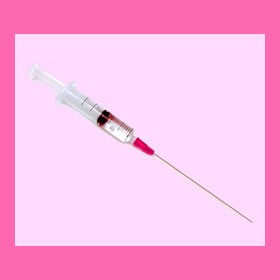
Breast augmentation using fat is one of the oldest forms of modern breast enlargement. Doctors have been using excess body fat to enhance the size and contour of the breasts since the early 1900s. Although still performed today, body fat transfer to the breasts has proven itself to be a poor version of minimally invasive surgical augmentation.
This article will explain why fat tissue transfer is often a poor substitute for others types of invasive breast enhancement.
Breast Augmentation Using Fat Explained
Fat transfer is typically performed by harvesting fat from the thighs, buttocks or abdomen and then transplanting it to the breasts. This can be done by a variety of minimally invasive techniques, from hypodermic needles to liposuction.
Breast enlargement with fat can be done to provide a small to moderate increase in size without implants or can be used to enhance breast implants which do not look natural due to placement or rippling issues.
Sometimes fat transfer is used during breast lift, to provide a more symmetrical and balanced look to the post operative results.
There have been a wide range of techniques used for fat transfer to the breasts, but using minimally invasive surgical methods, none have stood out among the crowd, as far as providing successful or permanent aesthetic results.
Problems with Fat Transfer Breast Enlargement
Fat transfer is problematic for several reasons.
First off, most of the fat placed into the breasts will be reabsorbed by the body. This mean that the results will be short lived in most patients.
Secondly, since the fat is free form, it is virtually impossible to tell exactly where it will go and whether or not it will stay there. Some transferred fat will be absorbed and other fat might migrate. This makes even short term symmetry very difficult to control and long term symmetry almost impossible to attain with many procedures.
Thirdly, implanted fat can harden or crystallize, causing scar tissue and possibly interfering with mammography screening.
Lastly, fat grafting is a more successful operation, but involves considerable surgical time and risks. This is not a minimally invasive procedure and has some of the greatest chances for complications in the entire breast plastic surgery industry.
Breast Augmentation Using Fat Warnings
Fat transfer is not a good solution for most women to consider for increasing breast size. It may be better suited for correcting bad breast implants or covering up small aesthetic concerns, which can occur with otherwise good implants.
Fat grafting is very similar to the techniques used in all natural breast reconstruction surgeries, such as the TRAM procedure and the latissimus dorsi flap technique. These are very invasive and may entail much greater risk than traditional implant-based augmentation.
Although fat transfer has many uses in cosmetic surgery, it is best suited to small anatomical locations, such as wrinkle reduction and lip enhancement. Placing enough fat into the breasts to make any noticeable size difference is simply asking for trouble, given the problematic nature of the fatty tissue once placed in the recipient location.



